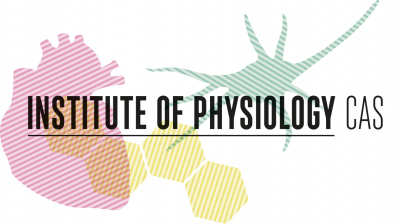NanoOnco
Technology description
| The name of the technology: | NanoOnco |
|---|---|
| Challenge: | Photodynamic therapy of malignant tumors by a visible light exhibits light penetration depth of maximum 2 cm into skin or tissues. To overcome this disadvantage, infra red light is required, either 980 nm penetrating to 4 cm or 810 nm penetrating up to 5 cm. Light upconversion nanoparticles having the ability to transfer light of 980 nm to the desired excitation of photosenzitizer for photodymamic therapy can be used in a nanoparticle drug formulation for intravenous application. Hence, we have developed “NanoONKO” nanoparticle drug formulation for the infrared photodynamic therapy of tumors based on a liposome nanoparticle mixture containing hydrophobic hydroxy-aluminum phthalocyanine. |
| Description: |
Using a patented procedure of microfluidization, the upconversion NaYF4-Yb-Er nanoparticles are mixed with a micronized powder of water-insoluble hydroxy-aluminum phthalocyanine microcrystals and with amorphous pharmaceutical grade lecithin into the desired buffer solution. Resulting nanoparticle/liposomal suspension is intended for intravenous application. In preclinical testing on nude mice with xenotransplanted human tumors, our patented preparation intravenously applied to the tail vein exhibited an optimum drug-to light time interval of 10 to 60 min when irradiated by medical 3 mW 980 nm laser directly onto tumors. Resulting efficiency for remission of amelanotic melanoma C32 and colon carcinoma HCT-116 was nearly 100% in certain cases and in remaining mice of testing groups significantly retarded tumor growth. Thus a proof of principle has been achieved for the infra red photodynamic therapy of tumors. Advantages of NanoONKO: - Short drug-to-light interval - 980 nm irradiation penetrating 4 cm into the skin or tissue - Expected high efficiency - Being one of the first application for nanomedicine - Potential modification to 800 nm upconversion nanoparticles with the ability to excite commercially available photosenzitizers such as Foscan® (Temoporfin, manufactured by Biolitec, excitation of 652 nm) |
| Commercial opportunity: | We are currently looking for a business partner, who would develop exemplar nanoparticle drug formulations in sufficient quality and with the required auxiliary testing in order to apply for the approval of clinical testing in a phase I & IIa by the state Drug Control Agency (Státní ústav pro kontrolu léčiv, SÚKL). In addition preclinical testing of nanoparticle side effects as such (with no photosenzitizer and neither irradiation) is required. If expectations of the high efficiency for curing solid tumors turn out to be correct, subsequent clinical testing may be organized with a strong partner ready to manufacture the product and complete clinical testing of phase IIb and phase III, in order to register the finalized drug formulation. |
| IP protection status: | CZ patent No. 307580 granted, PCT/IB2018/057981 (filing date 16 Oct 2018) |
| Development status: |
Phase 3Corresponds with TRL 5 and TRL 6 Technology validation and implementing it in real environment. Testing the technology outside of the laboratory and its adjustment to external conditions.
|
| Partnering strategy: | Co-development Collaboration investment licensing |
| More information: | |
| Images: | No picture inserted |
| Categories: | Pharma |
| Owner of a technology: | 75% Institute of Physiology of the Czech Academy of Sciences, Prague 25% RCD Limited, Dobřichovice |
